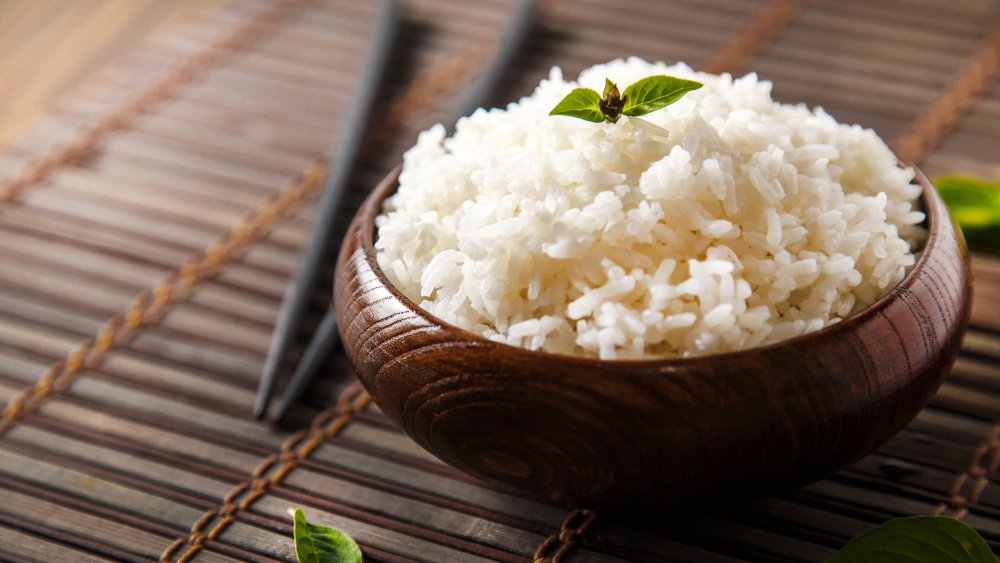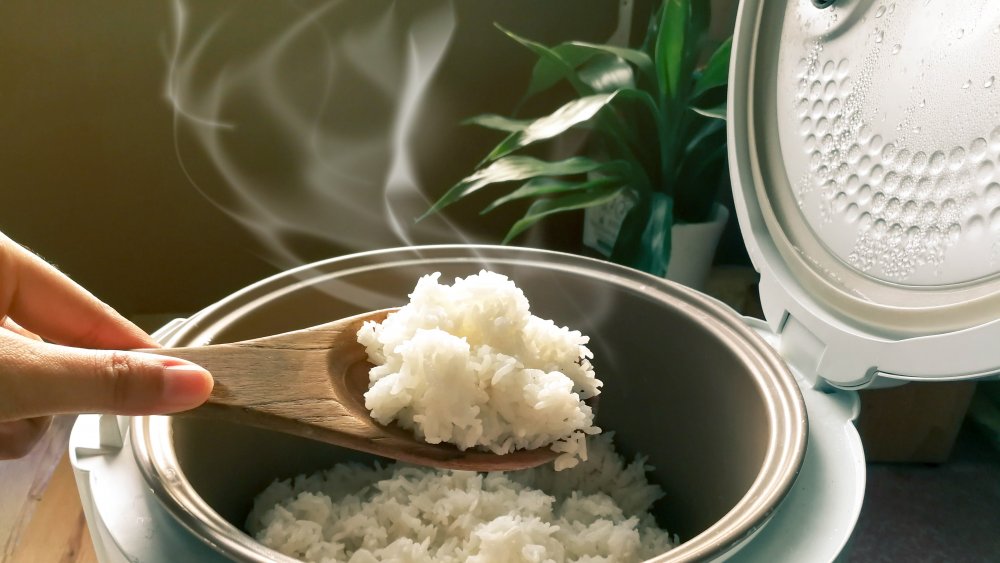The Dangerous Mistake You Could Be Making With Your Rice
Is precooked rice a health hazard, or a hearty must-have to keep on hand? After all, many beloved recipes, from fried rice to Mediterranean salads to arancini, call for cold rice (via The Guardian). And in 2015, scientists suggested that rice cooled for 12 hours (even if later reheated) could cut its calorie load by up to 60 percent, the BBC reported.
Others believe that rice should never be precooked for later use (via Medical News Today). What's the truth?
In short, there are legitimate reasons for concern surrounding reheated rice, but they can be avoided with proper handling and storing procedures. According to USA Today, some dried foods (including pasta and rice) "contain a bacterium called Bacillus cereus that produces a toxin when heated and left out too long," which can cause illness after eating. So if rice is cooked and abandoned on a counter for hours, this spore-type bacteria can grow — and it's not necessarily eliminated in the recooking process. Even worse, The Guardian also notes that this risk only mounts as the rice sits out for longer periods.
How to avoid food poisoning from reheated rice
Medical News Today reports that Bacillus cereus can cause food poisoning symptoms (to the tune of 84,000 estimated U.S. cases per year), such as diarrhea or vomiting, or even "severe complications" among at-risk populations. USA Today adds that vomiting can occur 30 minutes to six hours after eating the rice, but the spores can also "germinate in the intestines" and lead to illness 16 hours later; in any case, the symptoms can persist for up to a full day's time.
To avoid such complications, The Guardian advises cooling rice within an hour or less after it has been cooked; not reheating multiple times; and making sure, upon recooking, that it's thoroughly heated to at least 73 degrees Celsius, or just above 163 degrees Fahrenheit.
Furthermore, cooling large amounts of rice in a massive pot or storage container may not completely halt the growth of bacteria. USA Today notes that growth can happen at temperatures of 40 to 140 degrees Fahrenheit, so experts recommend placing into shallow containers to speed up the cooling process and help avoid this "danger zone."
For even faster cooling, spread the rice on a baking sheet, tossing and separating during the process — as an added bonus, Livestrong explains that the exposure of rice to air helps ward off botulism. Finally, Medical News Today advises, store at below 40 degrees until reheating, and use within three to four days.

